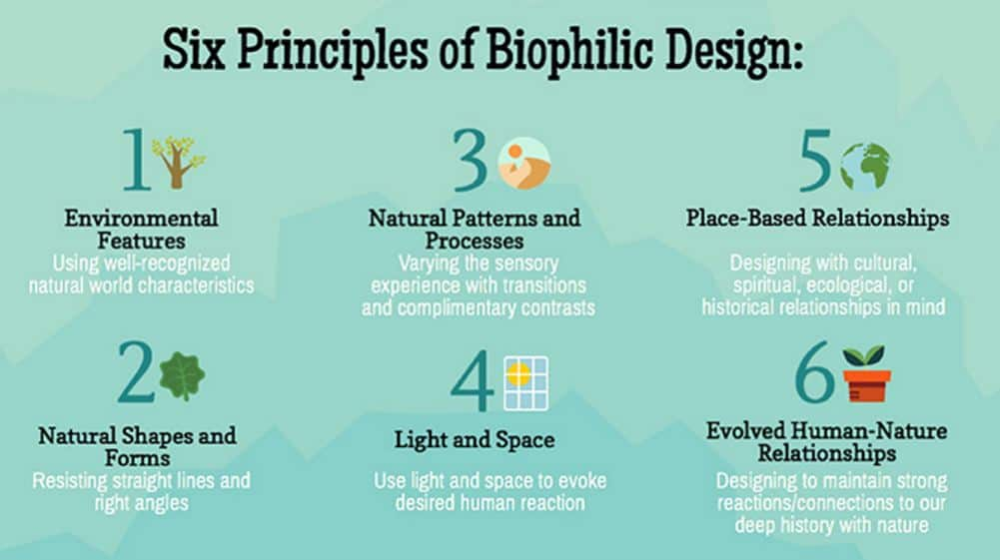How Does Architecture Incorporate Biophilic Design Principles In Commercial Spaces?

Have you ever heard of "biophilic design"? It may sound like a new-age concept, but it has been around for quite some time now. Essentially, biophilic design involves incorporating elements of nature into our built environments in order to create a better connection between humans and the natural world.
Now, you may be thinking that this sounds a bit hippy-dippy, but stay with me here. There are actually a lot of practical benefits to biophilic design that go beyond just "feeling more connected to nature."
What are the benefits of biophilic design?
1. Improved air quality: One of the main benefits of incorporating plants and other natural elements into our indoor spaces is that they help to purify the air. Many common indoor plants have been shown to remove toxins such as benzene, formaldehyde, and trichloroethylene from the air.
2. Better mental health: Studies have found that merely looking at images of nature can help to reduce stress and anxiety levels in humans. By incorporating actual natural elements into our built environments, we can help to create more calming and relaxing spaces.
3. Increased productivity: Another benefit of biophilic design is that it has been shown to increase productivity levels in workers. This is likely because being in closer proximity to nature can help to reduce feelings of fatigue and increase levels of engagement and focus.
4. Positive impact on physical health: Some studies have suggested that exposure to natural light and views of nature can help to lower blood pressure and reduce pain levels.
5. Energy savings: By incorporating more natural elements such as plants and green walls into our indoor spaces, we can help to improve insulation and reduce the amount of energy needed for heating and cooling.
6. Higher property values: Properties that incorporate biophilic design features such as rooftop gardens or green walls are often seen as more desirable by potential buyers and renters. This can lead to higher property values and increased ROI for property owners.
How can you incorporate biophilic design into your space?
There are many different ways to incorporate biophilic design into your living or working space. Here are just a few ideas:
1. Add plants: This is perhaps the most obvious way to bring nature indoors. You can choose from a wide variety of indoor plants, from small succulents to large tropical trees.
2. Use natural materials: Incorporating natural materials such as wood or stone into your space can help to create a more soothing and organic feel.
3. Bring in natural light: Try to allow as much natural light as possible into your space. If you don't have many windows, consider using natural light bulbs or light fixtures that mimic natural light.
4. Create a green wall: Green walls (also known as vertical gardens) are a great way to add a lot of greenery to a small space. These walls consist of plants that are grown vertically on a wall or other vertical surface.
5. Incorporate natural patterns: Patterns such as leaf prints or florals can help to create a more natural feel in a space.
6. Create a water feature: Adding a small fountain or other water feature can help to create a more calming and peaceful environment.
7. Use earthy colors: Colors such as greens and browns can help to create a more natural and organic feel in a space.
FAQ
What if I don't have a lot of space?
Even if you only have a small space to work with, there are still many biophilic design elements that you can incorporate. For example, you could add a few small plants to your desk or hang a couple of framed nature prints on the wall.
Is biophilic design expensive?
Not necessarily. While some biophilic design elements (such as a green wall) may require a larger initial investment, many other elements (such as adding plants to your space) can be done quite affordably.
Do I need to be a design expert to incorporate biophilic design into my space?
No, you don't need to be a design expert to incorporate biophilic design into your space. There are many resources available online (such as Pinterest and Houzz) that can provide inspiration and guidance. Additionally, many plant nurseries and home decor stores now have staff who are knowledgeable about biophilic design and can provide advice and suggestions.
So, there you have it. Biophilic design may sound like a new-age concept, but it is actually a very practical and accessible way to create more comfortable and healthy indoor spaces. By incorporating natural elements into our built environments, we can help to improve air quality, reduce stress and anxiety levels, increase productivity, and much more. Give it a try and see how it can transform your space!




Post a Comment for "How Does Architecture Incorporate Biophilic Design Principles In Commercial Spaces?"